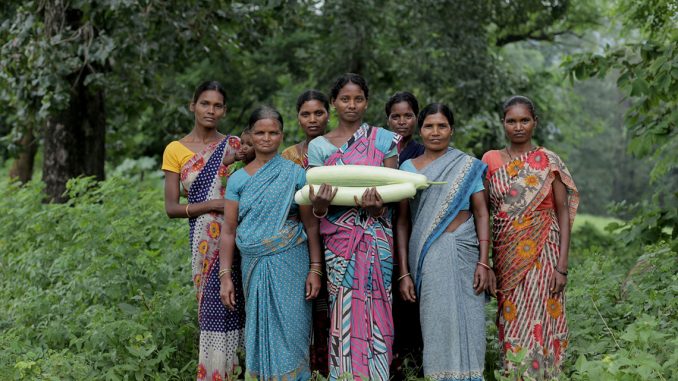
The course of change
Such traditions have changed the lives of thousands such farmers. They only require some modifications for better production, says Nata Kishore Mishra, chief functionary of the Centre for Integrated Rural and Tribal Development (CIRTD), a local non-profit working to popularise organic farming and promote indigenous seed banks created by farmers. “Earlier, we used to apply raw cow dung or compost to the soil and sow the seeds in the fields. The production was too little to fulfil our family needs,” says 35-year-old woman farmer Soharmati Topno.
“While suggesting the farmers go for multi-cropping instead of traditional monoculture, we facilitate convergence between the farmers and experts like Subhash Palekar, the agricultural scientist famous for his idea of zero budget natural farming,” Mishra says.
The model of zero budget natural farming entails producing crops at zero or near zero cost. Palekar has trained the farmers on how to prepare organic fertilisers using cow dung, cow urine, jaggery (a type of brown sugar made in India) and lentil powder, as well as organic pesticides using the leaves of neem (Azadirachta indica), karanja (Pongamia pinnata) and calotropis along with garlic, jaggery, cow dung and cow urine in different compositions. The farmers, however, use molasses rich mahua (a tropical tree) instead of jaggery as the former is available in the vicinity and nearby forest.
The benefits
Multi-cropping and organic fertilisers have transformed the practice of traditional subsistence agriculture into a dependable livelihood option for more than 2000 tribal farmers applying natural farming on more than 1200 hectares of land. “My small piece of agricultural land is sufficient now to feed my family year-round while meeting expenses for the education of my two children,” says Golapi Sa, 40, of Patkijore village who farms a little less than a hectare of land.
The best part of the story is that the tribal women prefer growing food crops rather than cash crops because their priority is to meet their family’s nutritional requirements. They’ve formed groups bringing together landholders and the landless poor on the basis of equal sharing: patches of land are leased out for organic farming.
Members of the Oliva Women Farmers Collective have received several accolades for growing about 12 crops – brinjal, chilly, onion, tomato, cow pea, watermelon, beans, bitter gourd, ladies finger, sunflower, pumpkin and leafy vegetables – in a single season by dedicating a row to each crop.
In order to promote traditional organic farming, the government of India has created the Paramparik Krishi Vikash Yojana programme. Under the scheme, over 600 extra hectares of land will be farmed organically by 1370 farmers from 30 clusters of tribal hamlets starting from this monsoon crop season, which usually spans from June to October. In this way, tribal farmers have set another example justifying the urge to shift from intensive to organic agriculture.
Source: LifeGate

Leave a Reply